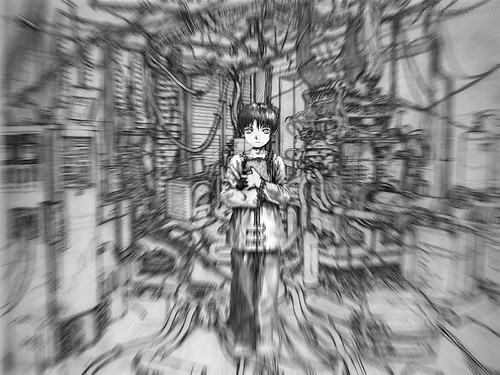This has been my mainstay form of doing and thinking ethnographically a connected and disconnected world. A reading of Gilles Deleuze’s Cinema 2 in dialogue with Donna Haraway’s works and methods. Working through the former helps me unpack the process of Haraway’s inquisitive “implosion” method and some of its aims better. I describe this as exploring how the world is interconnected one process and thing at a time, how these connections are vitally and politically important, and how this work is inexhaustible. Following this exegesis, I offer a series of exercises for putting this method into practice, one that I use myself and teach to graduate students and undergrads.
The paper is open access in Cultural Anthropology and I owe them a full extra page with more experiments and exercises. You can get it there, here is how it begins:
I have taught a course called Science and Politics for a number of years and one year in particular, it was very early in the morning, a big lecture class at 8:00am. To get to the lecture hall we all passed this little shop that sold good coffee and chocolate croissants. … And just as a way of waking up in the morning, I would ask people to unpack objects, to take a chocolate croissant and lead me through flour and chocolate and butter and sugar and coffee and connect us to world histories that way. I would ask people to pick an object, the T-shirt that the person sitting next to them was wearing, what was printed on it, the label, the very fact of labeling, the fibre composition. If it’s got polyester, then take me through the history of Purity Hall and research labs at Du Pont; you know, back me up into nitrogen chemistry. If it’s cotton, then back me into pesticides and the California water projects and where cotton is grown and the length of the fibre and what about what you are wearing on your chest? I would ask people, as a way of talking about science and politics, to take a pencil, a piece of paper, the architecture of the lecture hall that you walked past; pick something and get the class started by giving me an account of it.
—Donna Haraway, in Live Theory (emphasis added)
WAKING UP TO CONNECTIONS …
 Coffee is not enough, alas. Necessary for some of us, but not enough to properly wake up to the connectedness of the world, to our connectedness to world histories. But why not? How do T-shirts, croissants, and pencils contain their histories without our being aware of them? Why does even Donna Haraway, a historian of these particular connections, need to wake up each day to them again?
Coffee is not enough, alas. Necessary for some of us, but not enough to properly wake up to the connectedness of the world, to our connectedness to world histories. But why not? How do T-shirts, croissants, and pencils contain their histories without our being aware of them? Why does even Donna Haraway, a historian of these particular connections, need to wake up each day to them again?
The everyday, it seems, conspires against us, or with that part of us that wants to live in an everyday in which objects are mere parts of the world and it all makes a certain kind of sleepy sense. The connections Haraway instigates in the coffee shop may strike one as outrageous, certainly so early in the morning. They require promiscuous knowledge; they seem to accuse one of not having done enough homework. Anxieties arise, some look for an exit. Even worse, the connections may threaten the well-made world one lives in. One senses a potentially dangerous demand in them. The dormant activist stirs, “If I find out that T-shirts contribute to environmental degradation or coffee to poverty, how am I going to get out of bed at all?”

How to live, how to know, how to be comfortable. How did comfort get wired in anyway?
